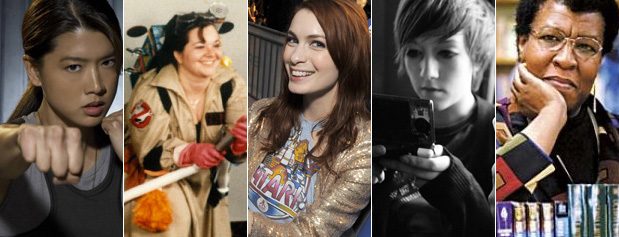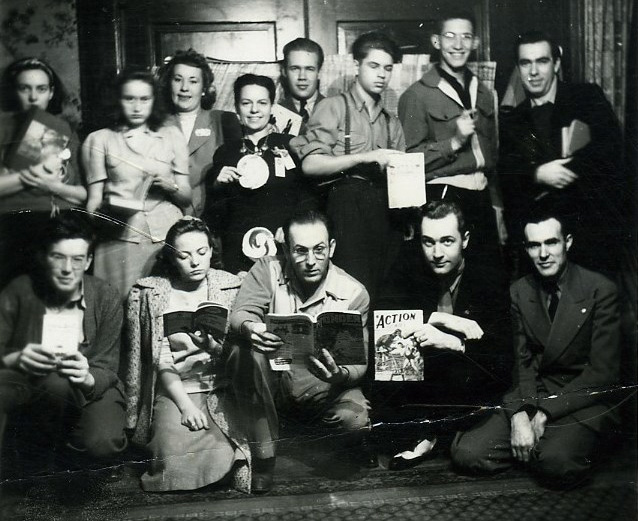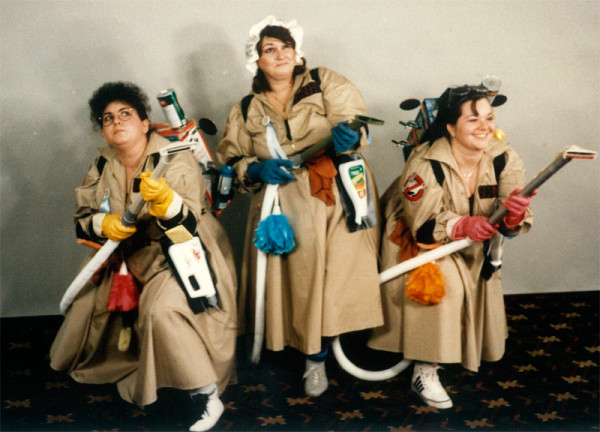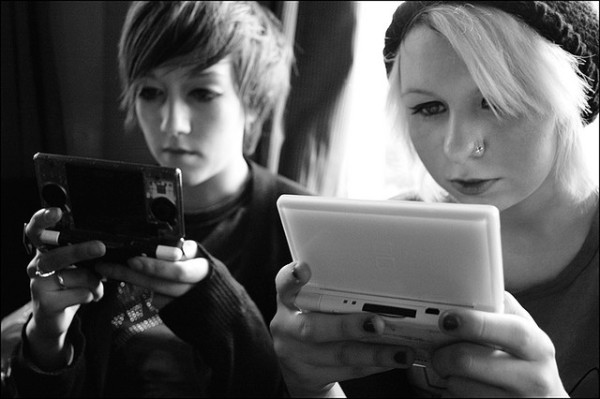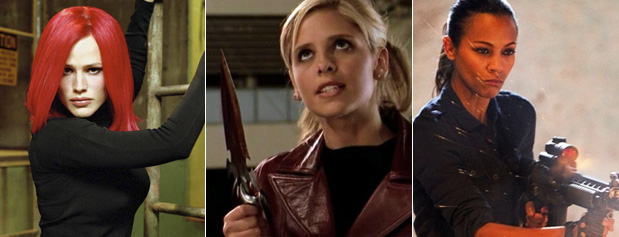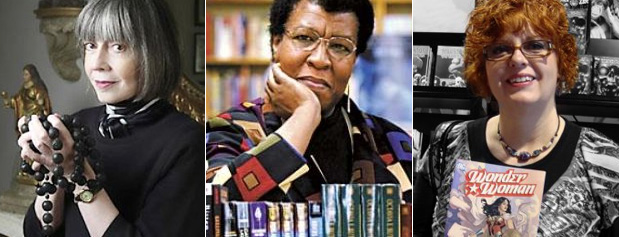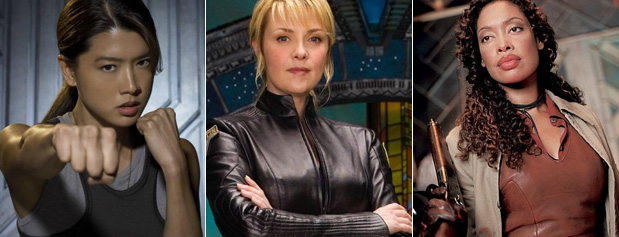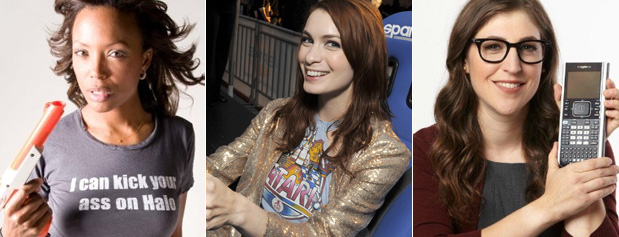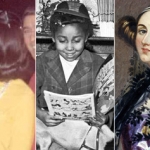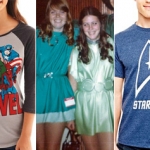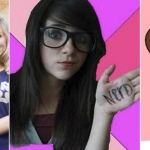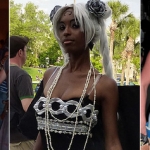Although mainstream media and pop culture view geek/nerd society as male-dominated, there’s a long history of female involvement in fandom. Women have played an original or integral part in significant scientific and technology related discoveries and inventions that pre-date any organized fandom or science fiction/comic book related social clubs. Wonder Woman was the first superhero character created to be a role model for females in comic books. Her first appearance was in 1941. She was aimed at an existing audience of female comic book fans. The Oxford Dictionary of Science Fiction dates the coinage of the term “fem fan” or “femme fan” as early as 1944.
Leigh Brackett, well-known author and screenwriter, whose first published story appeared in the February 1940 issue of Astounding Science Fiction, is quoted as saying: “There always were a certain number of women fans and women readers.” Considering her success and that of her female contemporaries, I would add women content creators to that list. Brackett numbered among the sought after guests for the first organized conventions.
It should be no surprise that in the geek community there is heated debate about when the very first convention took place. There are valid claims for 1936 and 1937. The first major forerunner of the modern convention was the World Science Fiction Convention of 1939. It took place over the July 4th weekend in conjunction with the World’s Fair. There were 200 participants. It’s been estimated 10-15% of the attendees were female. A woman made fandom history during this convention, although the credit has traditionally been given to a man. Myrtle R. Douglas, a fanzine editor, designed and created the first costumes worn at a convention. The World Science Fiction Convention has been held annually since World War II. You probably know it better as Worldcon.
The first official recognition of women as a viable fandom audience was the “Women in Science Fiction” panel at the 10th World Science Fiction Convention in 1953. The year marked the first time the convention had a woman organizer, author Julian May. Mainstream recognition of an influential female presence in fandom didn’t occur until the success of female science fiction authors of the 1960s, including Ursula K. Le Guin and Anne McCaffrey. In 1977, WisCon, the only feminist science fiction convention, was founded. It’s credited as the home of the Tiptree Award, named after author James Tiptree, Jr. (a pseudonym for Alice Bradley Shelton).
Even with all this evidence pointing to the opposite view, mainstream media still persists in perpetuating the popular cultural myth that the geek/nerd community is the domain of men — especially educated, white males. The first fandom to have women visibly active to the mainstream culture appeared in the 1970s — with, of course, Star Trek. The early, organized Trek fandom was the first to boast an estimated majority of female members.
Even now, the statistics of female involvement in the industries that support the geek/nerd world — comic books; science fiction/fantasy novels, movies and television shows; and animation/anime — are far lower than the actual participation percentages of women in fandoms. However, statistics from within the geek/nerd culture paint a very different landscape than the statistics which reflect mainstream ideals:
- Comic book store reports and self-identified surveys place female readership at 35-40% of total sales.
- 40% is the average for female attendance at science fiction conventions, and 40% of the audience that saw The Avengers on its opening weekend was female.
- The National Science Foundation reports an almost equal percentage for males and females who read science fiction/fantasy — around 30% of all readers for each of these two genders.
- Women make up close to 50% of the Syfy Channel’s viewing audience.
- The Star Trek fandom is reported to be at least 50% female.
- Females encompass 40% of all video game players and 40% of World of Warcraft players.
- Roughly 130 million women play online PC games worldwide while men clock in at 140 million. There is a significantly greater percentage of women 18 and over who play PC games than males 17 or younger (31% vs. 19%).
- 56% of social media users are women.
Women have had an active and influential presence in the geek/nerd community for so many decades that the influence has become a legacy. There’s a generation whose formative years happened in the ’80s and ’90s. We were witnesses and participants of the advent of technology, the boom of technology, and the acceptance of a large part of the mainstream culture of those who understood and were skilled in technology; i.e., the nerds and the geeks.
Those generations of women were also raised with the ideal of female empowerment — any girl could choose any career she wished. Our mothers and other women with personal influence on us had careers. Role models abounded… Science fiction authors, scientists, computer programmers, the budding video game design industry, engineers, soldiers, astronauts, and strong, diverse women characters in books, visual media, and comic books. Not even the sky was the limit, especially for those of us interested in fandoms. Star Wars gave us Princess Leia, who was the living embodiment that a woman could kick butt, be intelligent, and still be a princess.
The second thing that happened to fuel the Geek Woman movement was the ’80s/’90s generation grew into adulthood. Many chose careers in fields with heavy influence on geek culture:
- Gail Simone has become one of the top comic book writers, known for female characters that are the equals of their male counterparts. She’s written for both Marvel and DC, among others. Her top credits include Birds of Prey, Wonder Woman, Batgirl, and Red Sonja. She is the creator of Women in Refrigerators, a website which identified female superheroes in the comic book world who have been harmed or killed as a plot device for a male character. The concept is now a well-known trope.
- Sara Pichelli is one of the top in-demand comic book artists. She’s the co-creator of Ultimate Comics Spider-Man and is known for her work on Guardians of the Galaxy.
- Becky Cloonan became the first woman to draw the main Batman title in 2012. During a career in comics that has spanned more than a decade, she’s a multiple Eisner Award nominee and is known for her passion for comics.
- Anne Rice can be credited with or blamed for the creation of the modern vampire paranormal story, which has become one of the top-selling genres in book publishing.
- Octavia Butler was one of the few African-American women science fiction authors, but is considered one of the best writers ever in the genre. In 1995, she became the first science fiction writer (male or female) to receive the MacArthur Foundation Genius Grant.
- Sally Ride was the first American woman astronaut to go into space.
The women of the ’80s/’90s generation also found role models in the science fiction and fantasy media of the era:
- Sarah Connor’s evolution into a cyborg-battling guerilla fighter in the Terminator movies;
- Ripley and her alien-fighting courage in the Alien franchise; and
- Trinity, the futuristic freedom fighter from The Matrix movies. These three were tough, independent, smart, and career-minded, but still very much women.
- The diverse women characters of Star Trek were smart, highly skilled in their careers, and respected by their male peers. Heck, women were even Starship Captains and Admirals.
- A lot of the space-based shows of the time featured leading women characters who were savvy and didn’t need a man around to feel worthy: Babylon 5, Battlestar Galactica, Farscape, Stargate, and Firefly.
- As we grew up, there were The Bionic Woman and Wonder Woman. The X-Files was one of the first shows to feature a female FBI agent, Dana Scully, in an authority position.
Women had carved a place in society, even geek society, alongside men and didn’t need a man’s approval to achieve their goals. No career field was closed to women. We had as many options open as the guys always had.
A generation of geek/nerd women grew up under the influence of these and many prior women role models and made career and life choices based on that influence. One of the life choices many made was to have their own families. An empowered generation of geek/nerd women having children produced its own legacy, especially among daughters and nieces.
We encouraged them to read books like The Hobbit and A Wrinkle in Time, and comic books with our favorite characters like the X-Men. We could barely contain our excitement when they were old enough to watch Star Wars, Star Trek, and Doctor Who. We took them to conventions at an early age. We taught them to operate computers and other technology by the time they were school-aged. The girls in our lives — daughters, nieces, and their friends — were exposed to all aspects of geek culture early in their lives.
Now, all those girls born in the late 1980s and ’90s have become young women in their later teens and twenties. The ones with parents that lean toward being members of the geek/nerd culture have embraced being a geek. They’re old enough to start exerting their own influence on the world around them. They are doing it in their own way, with their own style, led by their own geek gurus and role models (real and fictional) like Felicia Day, Danica McKellar, Tina Fey, Lena Dunham, Suzanne Collins, JK Rowling, Veronica Roth, Alison Bechdel, Fiona Staples, Heidi MacDonald, Bella Swan, Katniss Everdeen, Hermione Granger, and Daenerys Targaryen.
The big message these young women geeks/nerds are hearing and promoting is “Not only can you be a Geek, you can be a Girl and a Geek”. The number of proud “Geek Girls” is growing, but it’s not a new phenomenon. “Geek Girls” have been around since before there was a geek/nerd culture, and we have no intention of leaving anytime soon. What you’re noticing is not a new creature, the “Fake Geek Girl”. What you see is the evolution of decades of the influence of geek/nerd women and the legacy of that influence.


